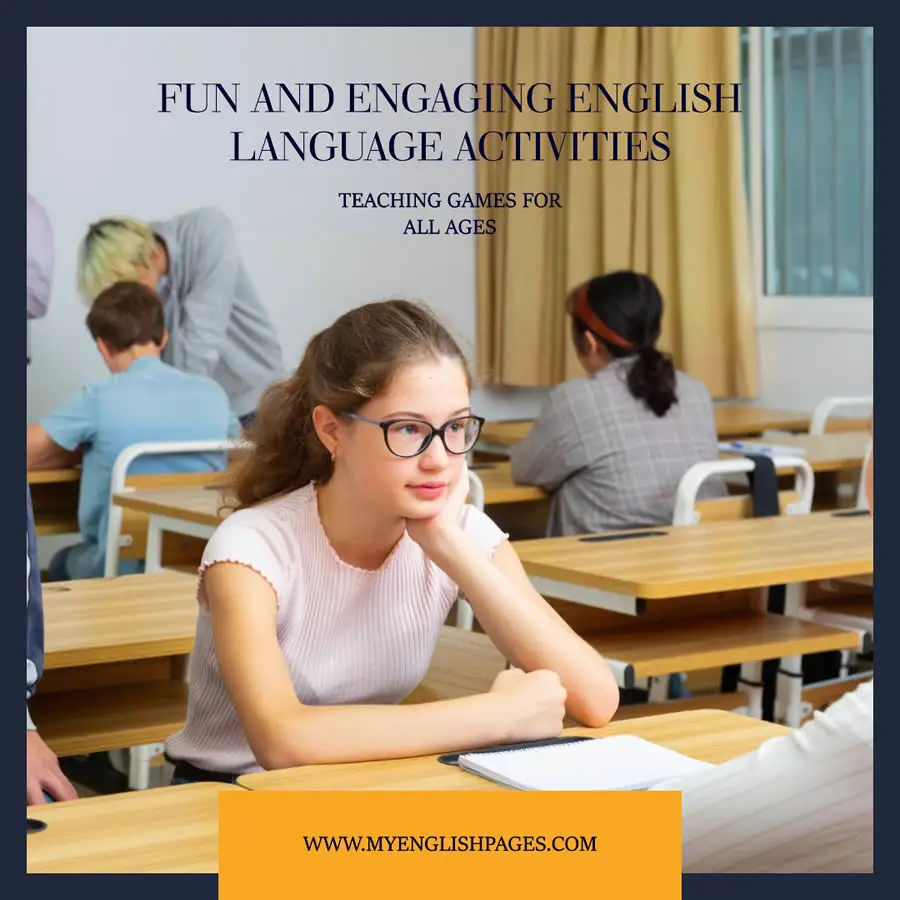Table of Contents
Introduction:
Reviewing vocabulary is a crucial aspect of language learning, but it doesn’t have to be repetitive or dull.
Engaging students in fun, interactive activities helps them remember new words and keeps them motivated and enthusiastic. When learners feel comfortable, their affective filter lowers, which allows them to process and retain information more effectively.
This post explores the significance of lowering the affective filter in language acquisition and offers seven exciting ways to review vocabulary in a fun and effective manner.
Before exploring the 7 ELT games, let’s first discuss how games help lower the affective filter.
Lowering the Affective Filter:

The “affective filter” refers to learners’ emotional barriers when acquiring a new language. If students are anxious, bored, or stressed, their ability to absorb and retain new information diminishes.
Creating a positive and low-stress environment where students feel comfortable making mistakes is key to lowering this filter.
Fun vocabulary review games engage students and create a relaxed atmosphere where learning becomes a natural and enjoyable process.
This emotional ease allows them to absorb vocabulary more effectively, participate without fear, and feel more confident in their language abilities.
The following section offers 7 ELT Games that are fun and engaging.
Fun Ways to Review Vocabulary:

1. Chain Game
Objective: Revising vocabulary, improving spelling
Implementation:
- Have students sit in a circle. The first student writes or says a word. The next student must think of a word that starts with the last letter of the previous word.
- Example: Go – out – tea – arm – meet.
- If a student spells a word incorrectly or hesitates too long, they’re out of the game.
- The last student remaining is the winner.
Variation: Conduct this activity orally for more speed and to focus on listening skills. This encourages quicker thinking and fluency.
2. Vocabulary Bingo
Objective: Reinforcing word recognition and comprehension
Implementation:
- Create bingo cards with vocabulary words instead of numbers. Call out definitions, synonyms, or sentences with gaps for the students to guess the word.
- Students mark the correct word on their bingo cards. The first to complete a row (vertically, horizontally, or diagonally) shouts “Bingo!” and wins.
This game allows for repetition without monotony, making it an engaging way to review vocabulary and test understanding in a fun context.
3. Pictionary with a Twist
Objective: Developing word associations through visual learning
Implementation:
- Divide the class into teams. One student from each team comes to the board and draws a picture representing a vocabulary word.
- Their team has to guess the word based on the drawing. Add a twist by using more abstract vocabulary or phrases for more advanced learners.
- The team that guesses correctly earns points.
This game combines creativity with vocabulary recall, making learning fun and visual.
4. Taboo
Objective: Strengthening speaking and circumlocution skills
Implementation:
- Write vocabulary words on cards. The student must describe the word without using the word itself or a list of forbidden words.
- Example: For “teacher,” forbidden words might include “school,” “classroom,” or “students.” The other students must guess the word based on the clues provided.
This activity pushes students to use synonyms, definitions, and creativity to communicate effectively.
5. Word Jumble Race
Objective: Encouraging team collaboration and reinforcing word structure
Implementation:
- Split students into teams and give each group a set of jumbled-up letters for a vocabulary word.
- The team must work together to unscramble the letters and spell the word correctly.
- The first team to finish all their words wins.
- You can increase difficulty by using longer words or phrases.
This game fosters teamwork, problem-solving, and spelling skills.
6. Memory Match
Objective: Strengthening vocabulary recall and improving memory skills
Implementation:
- Create a set of cards with vocabulary words on one set and definitions or synonyms on the other.
- Lay the cards face down, and students take turns flipping over two cards to try and match the word with its definition or synonym.
- The player with the most matches at the end wins.
This activity enhances memory and reinforces understanding of the vocabulary.
7. Vocabulary Charades
Objective: Practicing vocabulary in an interactive and physical way
Implementation:
- Students act out a vocabulary word to their teams without speaking, and they try to guess the word.
- The team with the highest score wins.
This activity brings vocabulary to life and encourages students to think about meaning and usage without relying on speech. It also promotes movement and creativity, helping kinesthetic learners connect with the material.
More on the affective filter
Conclusion:
Making vocabulary reviews engaging and fun is essential to keeping learners motivated and involved. By incorporating a variety of interactive activities and ELT games, you can create a low-pressure environment where students feel comfortable practicing and experimenting with new words.
This not only lowers the affective filter but also increases retention and enjoyment in the classroom.
The above seven ELT Games and activities offer creative ways to bring vocabulary learning to life, making it an enjoyable experience for both teachers and students.


